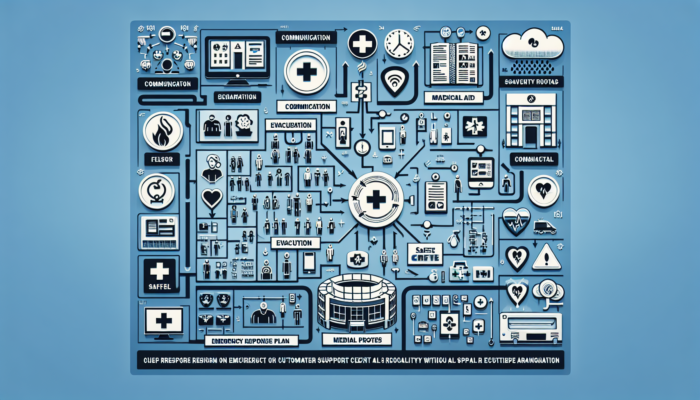In the rapidly evolving realm of customer relationship management (CRM), merely implementing a CRM system is insufficient for maintaining a competitive edge. A robust Technical support infrastructure is essential to guarantee uninterrupted operations and peak performance. The role of technical support is vital in maintaining CRM systems, as it addresses various challenges, offers expert insights, and ensures the long-term viability of the system. In this article, we will thoroughly examine the multifaceted role of technical support in CRM maintenance and highlight its importance in driving organisational success.
1. Understanding the Critical Role of Technical Support in CRM Maintenance
Technical support acts as the cornerstone of CRM maintenance, facilitating the effective integration of the system within an organisation’s daily operations. It functions as a vital resource that ensures the CRM system operates seamlessly, promptly addressing any minor challenges or technical glitches that may arise. Below are several key aspects that underscore the significance of technical support in maintaining a CRM system:
1.1 Troubleshooting and Resolving Technical Issues Efficiently

CRM systems consist of intricate software and hardware components that are prone to encountering technical challenges from time to time. The teams responsible for technical support are tasked with quickly identifying and efficiently resolving these issues. They possess the necessary expertise to troubleshoot a variety of CRM system malfunctions, ensuring consistent functionality and minimising any potential downtime.
- Technical support teams utilise advanced diagnostic tools and methodologies to uncover the fundamental causes of CRM system issues.
- These teams possess extensive knowledge of the architecture of the CRM system and can effectively resolve both software and hardware-related challenges.
- By swiftly addressing and rectifying issues, technical support teams reduce disruptions to daily operations and significantly boost overall productivity.
1.2 Managing Regular System Updates and Enhancements
To maintain relevancy and competitive advantage, CRM systems must receive regular updates to incorporate new features and functionalities. Technical support teams play a crucial role in overseeing these updates, ensuring that the CRM system remains current with the latest innovations. By keeping the system optimised, technical support aids organisations in maximising the returns on their CRM investments.
- Technical support teams work closely with CRM vendors to stay updated on new releases, patches, and bug fixes.
- They assess how these updates will impact the organisation’s CRM environment and coordinate their deployment.
- Regularly updating the CRM system allows technical support teams to ensure that organisations can leverage new features, enhanced performance, and improved security measures.
1.3 Providing Comprehensive User Training and Support
A CRM system is only as effective as its users. Technical support teams offer extensive training and assistance to users, enabling them to fully utilise the potential of the CRM system. This training encompasses educating users about the system’s functionalities, best practices, and addressing any queries or challenges they may face. User training and support empower employees to use the CRM system effectively, which in turn enhances overall productivity and efficiency.
- Technical support teams create training materials and conduct training sessions to familiarise users with the CRM system features.
- They provide ongoing assistance to tackle user questions, concerns, and challenges to ensure a smooth and effective user experience.
- By encouraging user adoption and proficiency, technical support teams enhance the organisation’s capacity to leverage the CRM system for improved customer relationship management.
1.4 Ensuring Data Integrity and Robust Security

CRM systems store a significant amount of sensitive customer information. Therefore, maintaining the integrity and security of this data is of utmost importance. Technical support teams implement stringent security measures, conduct regular data backups, and monitor system performance to protect against data breaches and unauthorised access. Their function is essential in upholding data confidentiality and adhering to privacy regulations.
- Technical support teams utilise encryption, access controls, and various security measures to safeguard customer data from unauthorised access.
- They perform routine data backups and establish data recovery protocols to mitigate the risk of data loss.
- By consistently monitoring system performance and security, technical support teams proactively address vulnerabilities and ensure the confidentiality and integrity of customer data.
2. Essential Responsibilities of Technical Support in CRM Maintenance
To effectively fulfil its role, technical support in CRM maintenance encompasses a diverse range of responsibilities. Below are some of the key duties undertaken by technical support teams:
2.1 Continuous System Monitoring and Performance Optimisation
Technical support teams continuously monitor the performance of the CRM system, ensuring it operates at peak efficiency. They proactively identify potential bottlenecks, diagnose performance issues, and implement necessary optimisations to enhance the overall system performance. By closely tracking system health, technical support teams can address concerns before they escalate into critical problems.
- Technical support teams utilise monitoring tools to track key performance metrics, such as response time, resource utilisation, and system availability.
- They analyse performance data to identify areas for improvement and apply optimisation strategies to enhance system responsiveness.
- By proactively tackling performance issues, technical support teams minimise system downtime and ensure a seamless user experience.
2.2 Efficient Bug Fixing and Issue Escalation

When users encounter bugs or technical issues within the CRM system, technical support teams serve as the initial point of contact. They meticulously analyse reported issues, diagnose the underlying causes, and implement appropriate fixes or workarounds. For problems requiring specialized expertise, technical support teams escalate the issue to the development team or relevant stakeholders, ensuring timely resolution.
- Technical support teams use ticketing systems to track and manage reported issues, ensuring effective communication and prompt resolution.
- They collaborate with developers and other stakeholders to investigate complex issues and develop long-term solutions.
- By quickly addressing and resolving system bugs and technical challenges, technical support teams enhance user satisfaction and maintain smooth system operations.
2.3 Managing Continuous System Updates
Technical support teams collaborate closely with CRM vendors to stay informed about system updates, patches, and bug fixes. They assess the potential impact of these updates on the organisation’s CRM environment and coordinate their implementation. Keeping the system updated ensures that the organisation benefits from the latest features, bug fixes, and security enhancements.
- Technical support teams review release notes and change logs provided by CRM vendors to understand the changes introduced in each update.
- They evaluate the compatibility of system customisations and integrations with new updates, minimising any potential disruptions.
- By closely monitoring system updates, technical support teams ensure that the organisation can capitalise on new features and improvements without compromising system stability.
2.4 Comprehensive Data Management and Maintenance
Data represents the lifeblood of any CRM system. Technical support teams are responsible for managing data integrity, conducting routine data backups, and implementing data recovery processes. They work in close collaboration with database administrators to ensure that the CRM system’s database remains healthy and optimised, thereby minimising the risk of data loss or corruption.
- Technical support teams partner with database administrators to implement best practices in data management, including data cleansing and deduplication.
- They schedule regular data backups and verify the integrity of backup files to guarantee data recoverability in the event of system failures.
- By proactively managing data integrity and enforcing robust data maintenance protocols, technical support teams protect the organisation’s valuable customer data.
2.5 Delivering User Support and Training
Technical support teams provide prompt and effective user assistance, addressing queries, concerns, and challenges related to the CRM system. They develop comprehensive training materials and conduct training sessions to empower users with the necessary knowledge and skills. By promoting user adoption and proficiency, technical support teams enable organisations to extract maximum value from their CRM investments.
- Technical support teams maintain a helpdesk system to track and manage user support requests, ensuring timely responses and solutions.
- They create user-friendly documentation, tutorials, and knowledge bases to provide self-service resources for users.
- By delivering ongoing user support and training, technical support teams increase user satisfaction and enable users to leverage the CRM system effectively.
Maximising the Benefits of Technical Support in CRM Maintenance
Technical support is integral to CRM maintenance, ensuring the seamless operation, optimisation, and longevity of the system. From troubleshooting issues and providing user support to managing system updates and data integrity, technical support teams are the driving force behind a well-maintained CRM system. By investing in robust technical support, organisations can maximise the advantages of their CRM systems, enhance customer satisfaction, and secure a competitive edge in today’s dynamic business environment.
Q1: What is the role of technical support in CRM maintenance?
A1: The role of technical support in CRM maintenance is vital as it addresses issues, provides expert guidance, and ensures the smooth operation and optimal performance of the CRM system.
Q2: Why is technical support important in CRM maintenance?
A2: Technical support is essential in CRM maintenance for various reasons, such as troubleshooting and resolving issues, managing system updates and enhancements, providing user training and support, and ensuring data integrity and security.
Q3: What are the key responsibilities of technical support in CRM maintenance?
A3: The key responsibilities of technical support in CRM maintenance include system monitoring and performance optimisation, bug fixing and issue escalation, continuous system updates, data management and maintenance, and user support and training.
Q4: How does technical support contribute to the success of CRM maintenance?
A4: Technical support contributes to the success of CRM maintenance by ensuring the smooth operation of the system, promptly resolving issues, keeping the system updated with new features and enhancements, safeguarding data integrity and security, and providing comprehensive user support and training.
Originally posted 2024-05-06 04:31:26.
The post Technical Support’s Role in CRM Maintenance Success appeared first on Healthcare Marketing Service.







